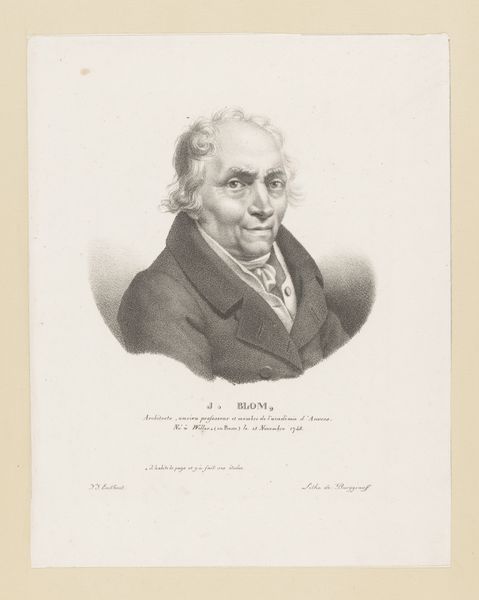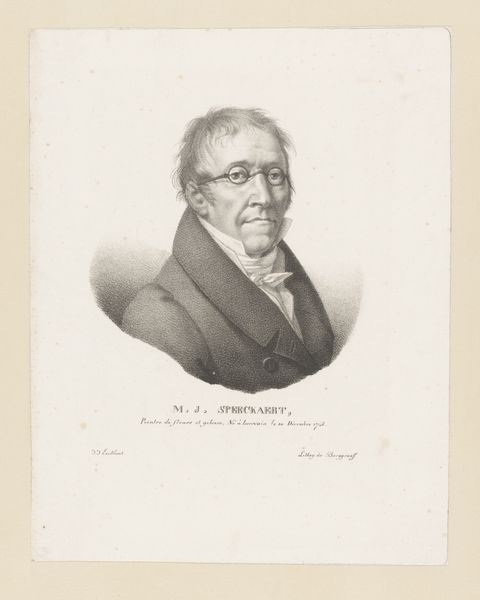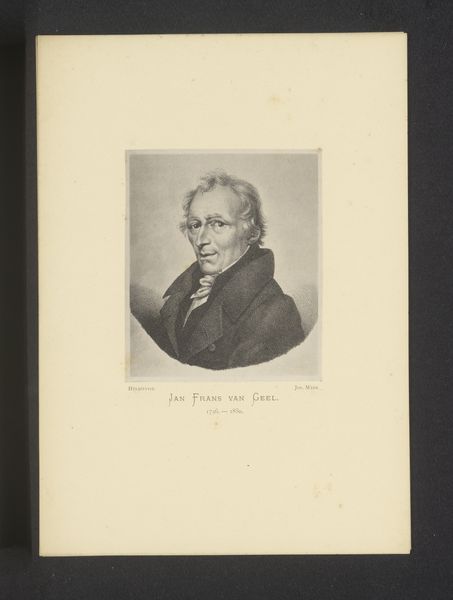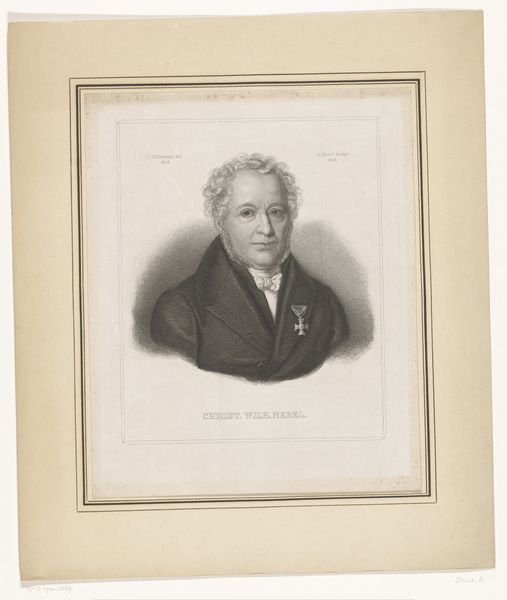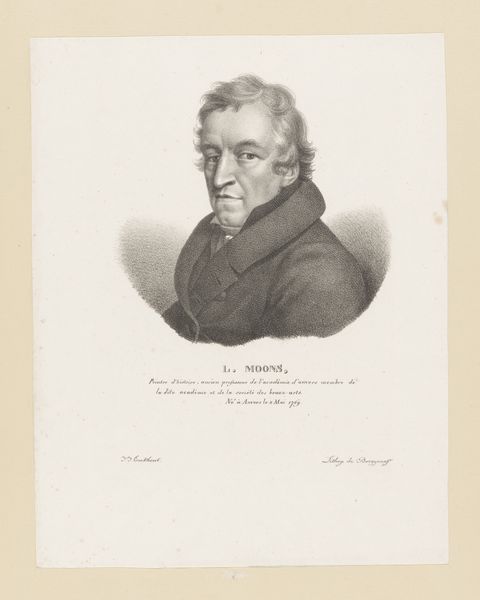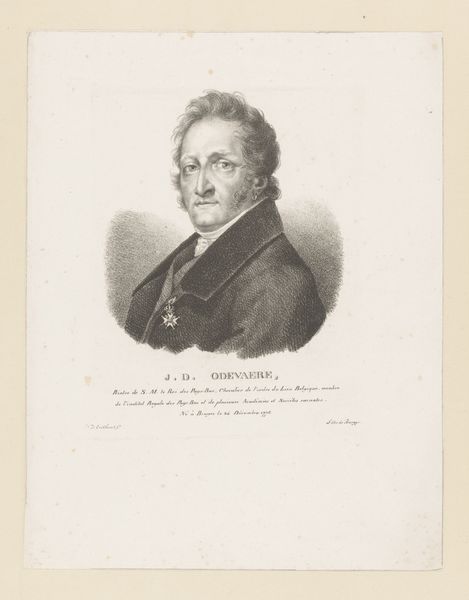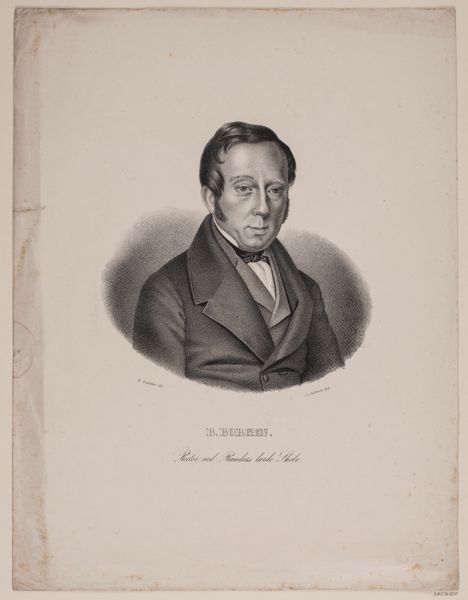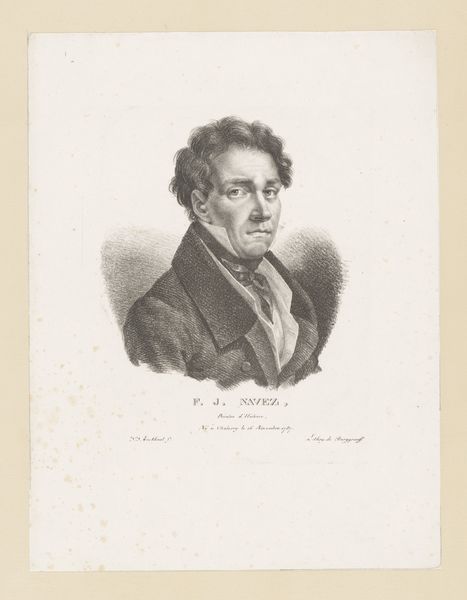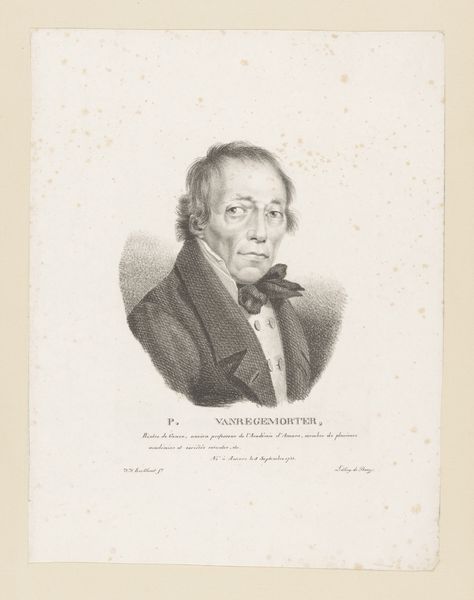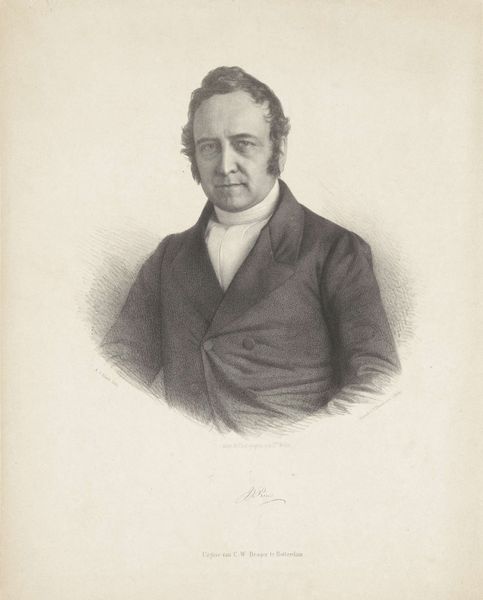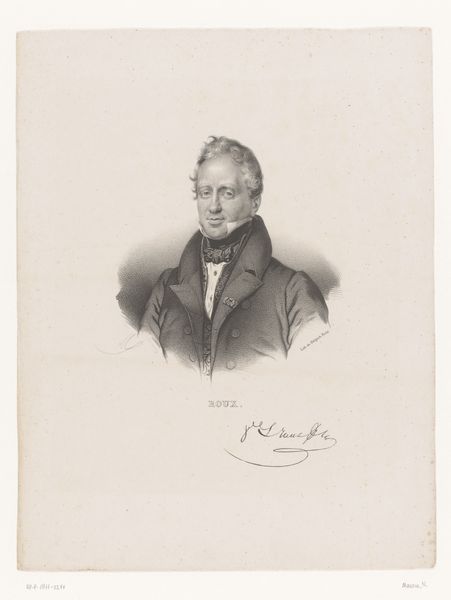
print, engraving
#
portrait
#
neoclacissism
# print
#
engraving
Dimensions: height 307 mm, width 234 mm
Copyright: Rijks Museum: Open Domain
Editor: We’re looking at “Portret van Jan Frans van Geel,” an 1822 print by Guillaume Philidor Van den Burggraaff, housed in the Rijksmuseum. It's a formal portrait, almost austere, but something about his gaze feels very direct. What do you see in this piece? Curator: I see a manifestation of power structures, carefully encoded in visual language. It's fascinating to consider the subject, Jan Frans van Geel, within the context of early 19th-century Europe. Notice the Neoclassical style – the emphasis on reason, order, and a deliberate connection to the visual language of ancient Greece and Rome. Editor: Yes, the composition definitely evokes that classical formality. But how does that style connect to the "power structures" you mentioned? Curator: Neoclassicism, with its emphasis on the rational and the ideal, was frequently employed to legitimize the ruling classes and the prevailing social order. It creates a visual connection to empires of the past and signals authority, status, and perhaps a kind of intellectual superiority. This was particularly poignant during the period following the Napoleonic Wars and the rise of nation-states. How does the fact that Van Geel was a "Statuaire de S.A. le Prince de Milan" play into this context, do you think? Editor: So his position as a sculptor to a Prince reinforces that idea of an elite class being visually represented and celebrated through art? It makes you think about who *isn't* being portrayed and whose stories aren't being told. Curator: Precisely. The choices made in depicting him - the composition, the engraving technique - are all laden with ideological weight. And how that relates to what is happening today with identity. Editor: I hadn't considered all of those layers beneath the surface of a seemingly simple portrait. Curator: That’s the beauty of engaging with art history critically – uncovering those layers and prompting reflection. Editor: It definitely gives me a lot to consider about representation and power in art. Thanks!
Comments
No comments
Be the first to comment and join the conversation on the ultimate creative platform.
